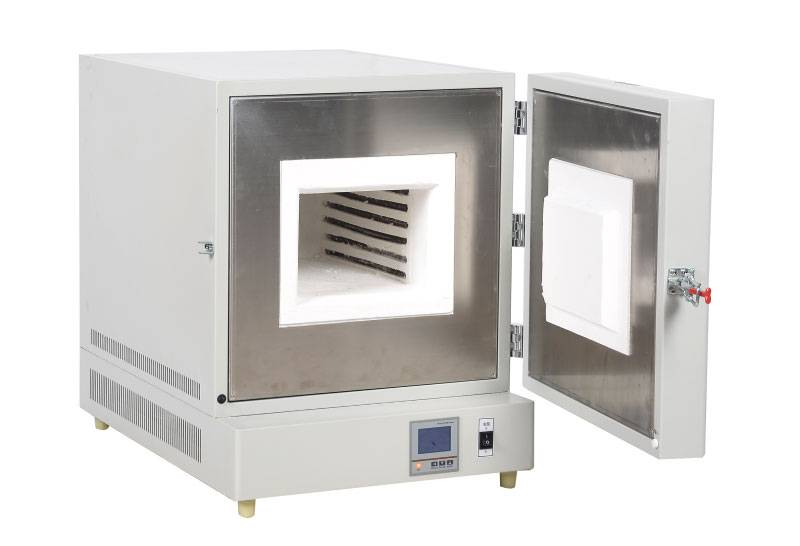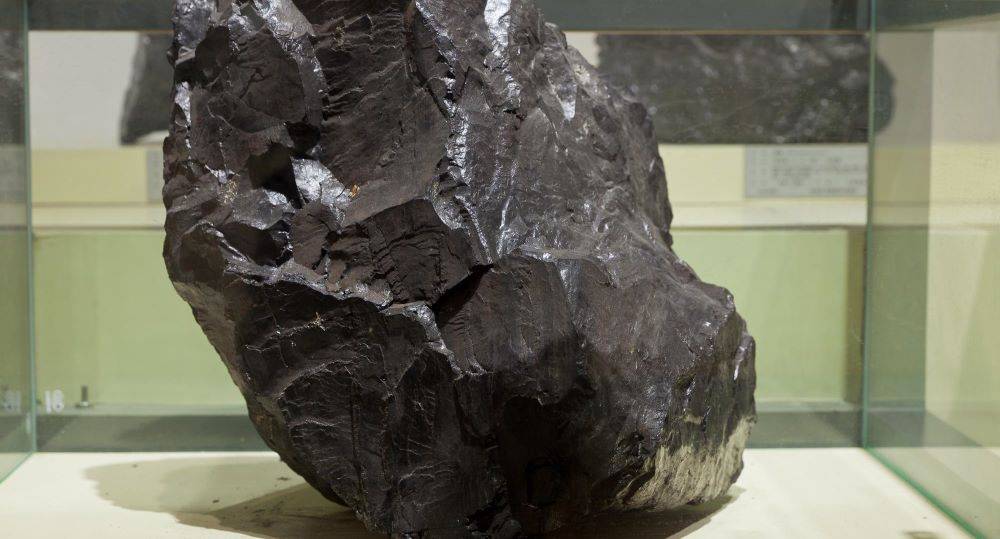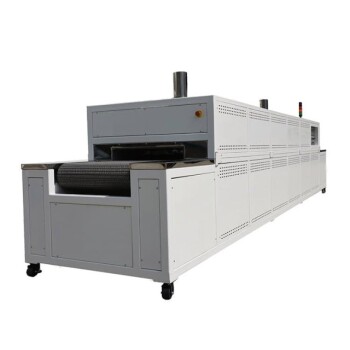Principi e struttura dei forni a muffola
Tipi di forni a muffola
I forni a muffola nei laboratori sono disponibili in varie forme, ognuna delle quali si distingue per i suoi principi di riscaldamento e le sue applicazioni. I tipi più comuni includono forni a muffola elettrici, a microonde e a gas, ognuno dei quali risponde a esigenze specifiche della comunità scientifica.
I forni elettrici a muffola sono molto apprezzati per la loro versatilità in attività quali stampaggio, fusione, essiccazione e riscaldamento di materiali. A differenza dei forni a induzione, che si basano su campi elettromagnetici per riscaldare i materiali, i forni elettrici a muffola utilizzano elementi refrattari riscaldati elettricamente e alloggiati in un contenitore metallico solido. Questo design consente di operare a temperature più elevate e con densità di potenza maggiori, rendendoli adatti ad applicazioni più impegnative.
I forni ad alta temperatura di tipo box rappresentano una variante classica dei forni a muffola, spesso di forma simile a una scatola. Questi forni offrono un maggiore isolamento termico e dimensioni personalizzabili, in genere caratterizzati da un design quadrato con una porta ad apertura frontale. Il design della porta spesso include uno sportello interno per una migliore conservazione del calore, rendendo i forni a scatola una scelta popolare in molti laboratori.
I forni a muffola Thermolyne sono un'altra tipologia specializzata, particolarmente nota per le applicazioni industriali da banco. Questi forni possono raggiungere temperature fino a 1200°C, il che li rende ideali per i processi ad alta temperatura in ambito industriale.
Conoscendo questi diversi tipi di forni a muffola, i ricercatori e i laboratori possono scegliere l'apparecchiatura più adatta a soddisfare le loro esigenze specifiche.

Meccanismi di riscaldamento
I forni a muffola utilizzano diversi meccanismi di riscaldamento per convertire l'energia elettrica in energia termica. I tipi più comuni includono forni a muffola elettrotermici e a microonde, ciascuno dei quali impiega metodi diversi per generare calore.
Forni a muffola elettrotermici
I forni a muffola elettrotermici generano calore tramite Riscaldamento Joule un processo in cui una corrente elettrica passa attraverso un conduttore, provocandone il riscaldamento a causa della resistenza. Questo metodo è altamente efficiente e ampiamente utilizzato in laboratorio per un controllo preciso della temperatura. Gli elementi riscaldanti, tipicamente realizzati in materiali come il nichelcromo o il kanthal, sono progettati per resistere alle alte temperature, garantendo una generazione di calore costante e affidabile.
Forni a muffola a microonde
I forni a muffola a microonde invece utilizzano microonde per convertire l'energia elettrica in energia termica. Questo processo prevede l'interazione delle microonde con il materiale all'interno del forno, provocando un'agitazione molecolare che porta a un riscaldamento rapido e uniforme. Il vantaggio di questo metodo risiede nella capacità di riscaldare i materiali in modo rapido e uniforme, rendendolo particolarmente adatto alle applicazioni che richiedono una rapida elaborazione termica.
Entrambi i meccanismi di riscaldamento offrono vantaggi unici, rispondendo a diverse esigenze industriali e di ricerca. La comprensione di questi principi è fondamentale per la scelta del forno a muffola più appropriato per applicazioni specifiche.
Componenti principali
I componenti principali dei forni a muffola sono parte integrante della loro funzionalità ed efficienza. Questi componenti includono:
-
Elementi di riscaldamento: Sono fondamentali per generare il calore necessario all'interno del forno. Possono essere realizzati in vari materiali, come il carburo di silicio o le leghe metalliche, ognuno dei quali offre proprietà uniche come la durata e la resistenza al calore.
-
Materiali isolanti: Un isolamento di alta qualità è essenziale per mantenere la temperatura interna e prevenire la perdita di calore. I materiali più comuni sono le fibre ceramiche e i mattoni refrattari, che offrono un eccellente isolamento termico e un supporto strutturale.
-
Camera del forno: È l'area centrale in cui avviene il processo di riscaldamento vero e proprio. La camera è tipicamente realizzata in leghe o ceramiche ad alta temperatura per resistere a condizioni estreme e garantire un riscaldamento uniforme.
-
Sistemi di controllo della temperatura: I sistemi di controllo avanzati sono fondamentali per una regolazione precisa della temperatura. Questi sistemi includono spesso regolatori digitali, termocoppie e regolatori PID (Proporzionale-Integrale-Derivativo) per mantenere temperature costanti e automatizzare il processo di riscaldamento.
Ognuno di questi componenti svolge un ruolo distinto nel garantire un funzionamento efficace ed efficiente del forno a muffola, in grado di soddisfare un'ampia gamma di applicazioni industriali e di laboratorio.
Ricerca e sviluppo nei forni a muffola
Sviluppo storico
L'evoluzione dei forni a muffola è stata segnata da tappe significative, soprattutto nel secondo dopoguerra. Durante questo periodo, i progressi tecnologici hanno rivoluzionato il settore, con particolare attenzione al controllo della temperatura e all'automazione. Queste innovazioni erano motivate dalla necessità di processi di riscaldamento più precisi ed efficienti, fondamentali per i settori industriali e scientifici in espansione.
Uno dei principali progressi è stato lo sviluppo di sistemi avanzati di controllo della temperatura. Questi sistemi hanno consentito una regolazione più accurata delle temperature di riscaldamento, essenziale per garantire risultati uniformi in varie applicazioni. Inoltre, l'integrazione delle tecnologie di automazione ha ridotto la necessità di interventi manuali, aumentando l'efficienza e riducendo il rischio di errori umani.
Inoltre, nel dopoguerra si è assistito a un'impennata degli sforzi di ricerca e sviluppo volti a migliorare la progettazione strutturale e l'efficienza energetica dei forni a muffola. Ciò ha portato alla creazione di forni più robusti e versatili che potevano essere adattati a un'ampia gamma di usi industriali e scientifici. I progressi in queste aree non solo hanno migliorato le prestazioni dei forni a muffola, ma ne hanno anche ampliato le applicazioni in diversi settori.
In sintesi, il periodo successivo alla Seconda Guerra Mondiale è stato un momento cruciale per lo sviluppo dei forni a muffola, caratterizzato da significative innovazioni tecnologiche che hanno plasmato il panorama moderno delle tecnologie di riscaldamento e lavorazione.
Ricerca nazionale e internazionale
La ricerca in Cina e all'estero ha contribuito in modo significativo ai progressi della tecnologia dei forni a muffola. Questi sforzi si sono concentrati principalmente su tre aree chiave: progettazione strutturale, uniformità della temperatura ed efficienza energetica.
In termini di progettazione strutturale la ricerca internazionale ha introdotto materiali e design innovativi che migliorano la durata e le prestazioni dei forni a muffola. Ad esempio, l'uso di ceramiche resistenti alle alte temperature e di materiali isolanti avanzati ha migliorato l'integrità strutturale complessiva e la longevità di questi forni.
L'uniformità della temperatura è stato un altro punto focale della ricerca, in particolare per garantire un riscaldamento uniforme nell'intera camera del forno. Gli studi hanno portato allo sviluppo di sofisticati sistemi di controllo della temperatura e di elementi riscaldanti migliorati che distribuiscono il calore in modo più uniforme. Questo è stato fondamentale per le applicazioni che richiedono una regolazione precisa della temperatura, come nella chimica analitica e nella sintesi dei materiali.
L'efficienza energetica ha registrato miglioramenti sostanziali. I ricercatori hanno sviluppato meccanismi di riscaldamento più efficienti e ottimizzato l'isolamento termico dei componenti del forno. Ad esempio, l'integrazione di tecnologie a risparmio energetico come gli scambiatori di calore rigenerativi ha ridotto notevolmente il consumo energetico. Questi progressi non solo riducono i costi operativi, ma contribuiscono anche alla sostenibilità ambientale riducendo al minimo gli sprechi di energia.
Nel complesso, gli sforzi di collaborazione dei ricercatori nazionali e internazionali hanno aperto la strada a forni a muffola più avanzati, affidabili ed efficienti, in grado di soddisfare un'ampia gamma di applicazioni industriali e scientifiche.
Aziende importanti
Il mercato dei forni a muffola è dominato da diversi attori chiave, ognuno dei quali contribuisce in modo significativo ai progressi tecnologici e agli standard di qualità del settore. Carbolite Gero (Regno Unito) si distingue per i suoi forni a muffola ad alte prestazioni, rinomati per la loro precisione e affidabilità in vari ambienti di laboratorio. Allo stesso modo, Nabertherm (Germania) si è affermata come leader, offrendo un'ampia gamma di forni a muffola per applicazioni industriali e di ricerca.
Nel mercato asiatico, Zhengzhou Coentec Instrument Co., Ltd. (Cina) ha fatto passi da gigante. Ltd. (Cina) ha fatto passi da gigante, in particolare nello sviluppo di soluzioni di forni a muffola di alta qualità e a costi contenuti. Queste aziende non solo producono apparecchiature all'avanguardia, ma investono anche molto in ricerca e sviluppo, assicurando che i loro prodotti rimangano all'avanguardia dell'innovazione tecnologica.
| Nome dell'azienda | Paese | Contributi chiave |
|---|---|---|
| Carbolite Gero | REGNO UNITO | Forni a muffola di precisione e ad alte prestazioni |
| Nabertherm | Germania | Ampia gamma di forni a muffola per diverse applicazioni |
| Zhengzhou Coentec Instrument | Cina | Soluzioni per forni a muffola convenienti e di alta qualità |
Queste importanti aziende continuano a plasmare il futuro della tecnologia dei forni a muffola, migliorando l'efficienza, la durata e la facilità d'uso.

Applicazioni dei forni a muffola
Usi industriali
I forni a muffola svolgono un ruolo cruciale in diversi settori industriali, in particolare nella lavorazione termica, nel trattamento dei pezzi e nella sintesi dei materiali. Questi forni sono indispensabili in industrie come quella del cemento e dei materiali da costruzione, dove facilitano il trattamento ad alta temperatura di materie prime e prodotti finiti.
Nell'industria del cemento, i forni a muffola sono utilizzati per la calcinazione delle materie prime, un processo che trasforma il carbonato di calcio grezzo in calce, un componente chiave nella produzione del cemento. Questa fase di lavorazione termica è essenziale per garantire la qualità e la consistenza del prodotto finale del cemento. Analogamente, nel settore dei materiali da costruzione, questi forni vengono impiegati per il trattamento termico di ceramiche, mattoni e altri materiali da costruzione, migliorandone la durata e l'integrità strutturale.
Inoltre, i forni a muffola sono fondamentali per la sintesi di materiali avanzati, come ceramiche e compositi, che richiedono un controllo preciso della temperatura e un riscaldamento uniforme. La capacità di questi forni di mantenere temperature elevate isolando il processo di riscaldamento dall'ambiente li rende ideali per queste applicazioni, garantendo che i materiali subiscano le necessarie modifiche chimiche e fisiche senza contaminazione.
In sintesi, i forni a muffola sono parte integrante dei processi industriali del cemento e dei materiali da costruzione, contribuendo in modo significativo alla qualità e all'efficienza dei trattamenti termici e della sintesi dei materiali.
Chimica medica e analitica
I forni a muffola svolgono un ruolo fondamentale nel campo della chimica medica e analitica, servendo una moltitudine di applicazioni critiche. Questi forni sono indispensabili nei processi di ispezione dei farmaci, dove facilitano il riscaldamento e il trattamento preciso dei campioni farmaceutici per garantirne la purezza e l'efficacia. Inoltre, i forni a muffola sono utilizzati nel pretrattamento dei campioni, una fase cruciale nella preparazione dei campioni per le successive procedure analitiche, migliorando così l'accuratezza e l'affidabilità dei risultati.
Nell'analisi ambientale, i forni a muffola vengono impiegati per analizzare campioni di acqua e aria, contribuendo all'individuazione di contaminanti e inquinanti. Questa applicazione è fondamentale per mantenere la salute dell'ambiente e garantire la conformità agli standard normativi. Inoltre, questi forni sono essenziali nell'analisi della qualità del petrolio, dove aiutano a determinare la composizione e le proprietà degli oli, un aspetto cruciale per industrie come quella petrolifera e automobilistica.
La versatilità e la precisione dei forni a muffola li rendono uno strumento prezioso in queste applicazioni di chimica analitica e medica, contribuendo in modo significativo ai progressi in questi campi.
Analisi del carbone
L'analisi del carbone è un processo fondamentale per valutare la qualità e l'idoneità del carbone per varie applicazioni industriali. L'analisi si concentra principalmente sulla determinazione di parametri chiave quali umidità, ceneri, sostanze volatili e composizione elementare. Ciascuno di questi parametri fornisce preziose indicazioni sul comportamento del carbone in diverse condizioni e sulla sua utilità complessiva nei processi industriali.
-
Contenuto di umidità: È una misura dell'acqua presente nel carbone, che può influenzare in modo significativo il suo potere calorifico e le sue proprietà di manipolazione. Un elevato contenuto di umidità può causare inefficienze nella combustione e nel trasporto.
-
Contenuto di ceneri: La cenere è il residuo non combustibile che rimane dopo la combustione del carbone. Un elevato contenuto di ceneri può ridurre l'efficienza termica del carbone e aumentare i costi di smaltimento delle ceneri.
-
Materia volatile: Si riferisce ai gas combustibili rilasciati durante il riscaldamento del carbone. Il contenuto di materia volatile influenza le caratteristiche di accensione e combustione del carbone, incidendo sull'efficienza della combustione e sulle emissioni ambientali.
-
Analisi elementare: Consiste nel determinare le concentrazioni di elementi quali carbonio, idrogeno, azoto, zolfo e ossigeno nel carbone. Questi elementi svolgono un ruolo cruciale nella comprensione della composizione chimica del carbone e del suo impatto ambientale.

L'uso di forni a muffola nell'analisi del carbone è fondamentale grazie al controllo preciso della temperatura e alle capacità di riscaldamento uniforme. Questi forni consentono di ottenere risultati accurati e riproducibili, essenziali per le industrie che si affidano al carbone come fonte di energia primaria.
Prospettive future
Personalizzazione e innovazione
Il futuro della tecnologia dei forni a muffola sarà caratterizzato da un profondo cambiamento verso la personalizzazione, l'intelligenza e l'efficienza energetica. soluzioni personalizzate, intelligenti ed efficienti dal punto di vista energetico. . Questi progressi non sono semplicemente incrementali, ma rappresentano un cambiamento paradigmatico nel modo in cui i forni a muffola vengono progettati e utilizzati in diversi settori industriali.
Soluzioni personalizzate
La personalizzazione sarà un fattore chiave che consentirà di adattare i forni a muffola alle esigenze specifiche di diversi settori. Ad esempio, nel settore medico, i forni potrebbero essere ottimizzati per un controllo preciso della temperatura e una contaminazione minima, essenziale per l'ispezione dei farmaci e il pretrattamento dei campioni. Le applicazioni industriali, invece, possono richiedere progetti robusti in grado di gestire un'elevata produttività e condizioni estreme.
Automazione intelligente
L'intelligenza nei forni a muffola sarà un'altra tendenza significativa, che sfrutterà l'automazione avanzata e le tecnologie AI. Questi sistemi intelligenti offriranno funzionalità come la manutenzione predittiva, il monitoraggio in tempo reale e meccanismi di controllo adattivi. Ad esempio, un forno a muffola guidato dall'intelligenza artificiale potrebbe regolare autonomamente il proprio profilo di riscaldamento in base al materiale in lavorazione, garantendo risultati ottimali e riducendo al minimo gli sprechi energetici.
Efficienza energetica
L'efficienza energetica rimane un punto cruciale, soprattutto alla luce delle crescenti preoccupazioni ambientali e delle pressioni normative. I futuri forni a muffola incorporeranno materiali isolanti ed elementi riscaldanti all'avanguardia, riducendo il consumo energetico senza compromettere le prestazioni. Le innovazioni nella gestione termica e nei sistemi di recupero del calore residuo ne miglioreranno ulteriormente l'ecocompatibilità.
In sintesi, il futuro dei forni a muffola sarà caratterizzato da una miscela di personalizzazione, intelligenza ed efficienza energetica, in grado di soddisfare le diverse esigenze in continua evoluzione delle industrie di tutto il mondo.
Esperienza utente migliorata
Il miglioramento dell'esperienza dell'utente nella tecnologia dei forni a muffola comporta un approccio multiforme che dà priorità alla sicurezza, all'efficienza operativa e alla perfetta integrazione con gli strumenti analitici. Questi miglioramenti sono stati pensati non solo per ottimizzare le prestazioni, ma anche per rendere l'apparecchiatura più facile da usare e adattabile alle varie esigenze industriali.
Miglioramenti alla sicurezza
La sicurezza rimane una preoccupazione fondamentale in laboratorio e in ambito industriale. I moderni forni a muffola sono dotati di meccanismi di sicurezza avanzati, tra cui funzioni di spegnimento automatico, monitoraggio della temperatura in tempo reale e materiali isolanti robusti che riducono al minimo il rischio di incidenti termici. Queste caratteristiche assicurano che gli utenti possano utilizzare i forni con fiducia, sapendo che la loro sicurezza è la priorità.
Efficienza operativa
I miglioramenti dell'efficienza si concentrano sulla riduzione del consumo energetico e sull'aumento della velocità e della precisione dei processi di riscaldamento. Innovazioni come i sistemi di controllo intelligente della temperatura e gli elementi riscaldanti ad alta efficienza energetica contribuiscono a cicli di riscaldamento più rapidi e a una regolazione più accurata della temperatura. Questo non solo fa risparmiare tempo, ma riduce anche i costi operativi, rendendo i forni a muffola più economici da utilizzare.
Uniformità di riscaldamento
Il raggiungimento di un riscaldamento uniforme in tutta la camera del forno è fondamentale per ottenere risultati coerenti nella lavorazione e nell'analisi dei materiali. I nuovi progetti incorporano sistemi avanzati di distribuzione termica che assicurano una distribuzione uniforme del calore, eliminando i punti caldi e freddi. Questa uniformità è essenziale per attività come la ricottura, la sinterizzazione e le reazioni chimiche, dove è necessario un controllo preciso della temperatura.
Integrazione con gli strumenti analitici
L'integrazione dei forni a muffola con gli strumenti analitici ne aumenta l'utilità nella ricerca scientifica e nelle applicazioni industriali. Ad esempio, l'interfacciamento con spettrometri, cromatografi e altri strumenti analitici consente di raccogliere e analizzare i dati in tempo reale. Questa integrazione snellisce i flussi di lavoro, fornendo a ricercatori e tecnici set di dati completi che possono essere analizzati immediatamente, accelerando così il ritmo della sperimentazione e dell'innovazione.
Concentrandosi su queste aree chiave, l'esperienza dell'utente con i forni a muffola è notevolmente migliorata, rendendoli strumenti più versatili, affidabili ed efficienti in vari settori.
Prodotti correlati
- Fornace a muffola da 1200℃ per laboratorio
- Fornace a muffola da 1700℃ per laboratorio
- Fornace a muffola da 1400℃ per laboratorio
- Fornace a muffola da 1800℃ per laboratorio
- Fornace a Atmosfera Controllata da 1200℃ Fornace a Atmosfera Inerte di Azoto
Articoli correlati
- Come scegliere il forno a muffola giusto per il vostro laboratorio?
- Forno a muffola: svelare i segreti del riscaldamento uniforme e dell'atmosfera controllata
- Esplorare l'uso di un forno a camera per applicazioni industriali e di laboratorio
- Guida completa ai forni a muffola: Tipi, usi e manutenzione
- Forni da laboratorio avanzati: Opzioni a cassetta, a muffola e a tubo per applicazioni ad alta temperatura















